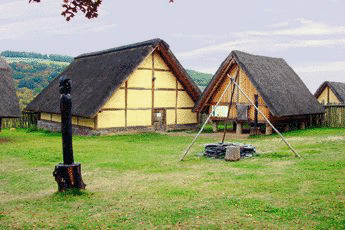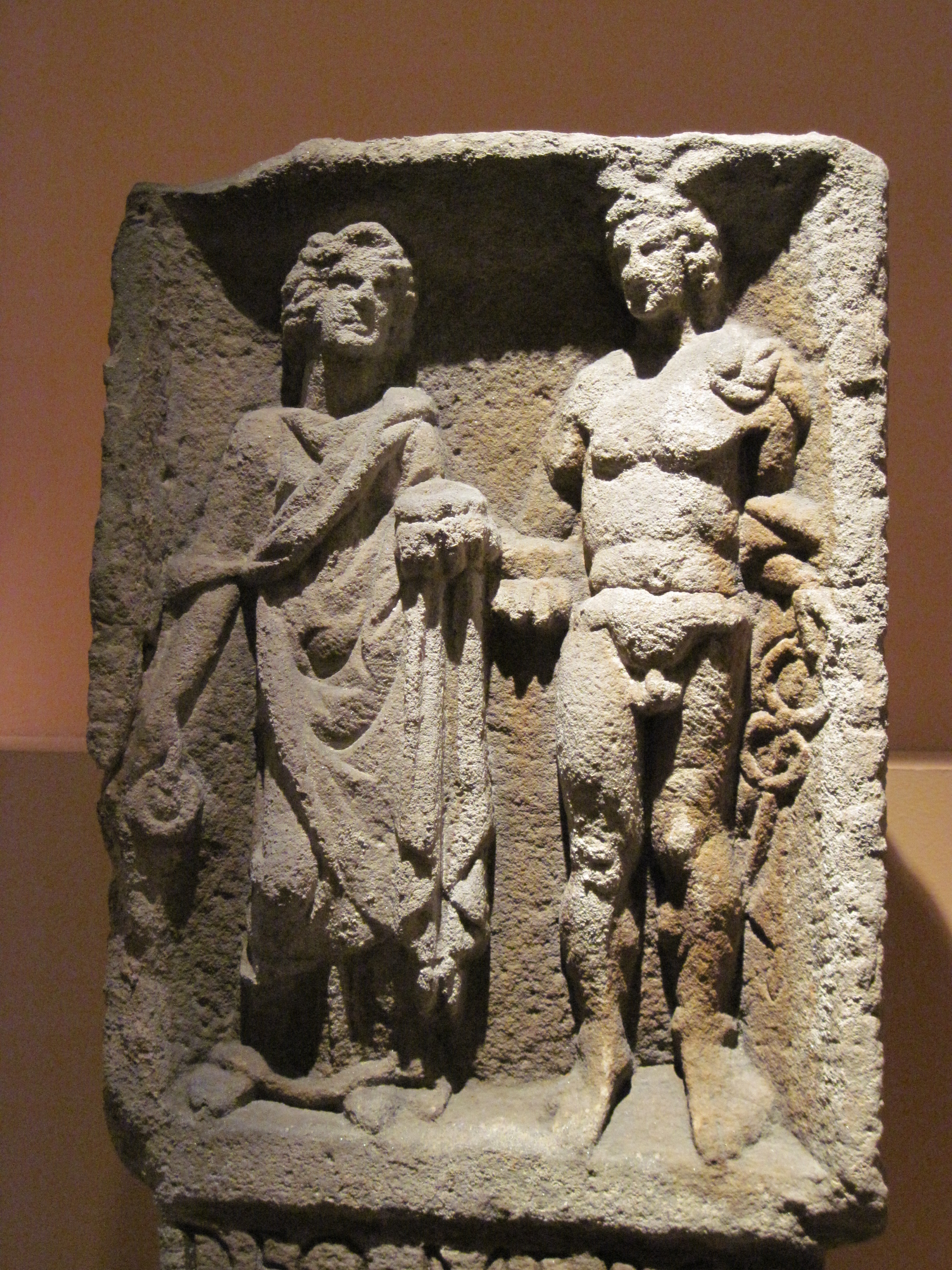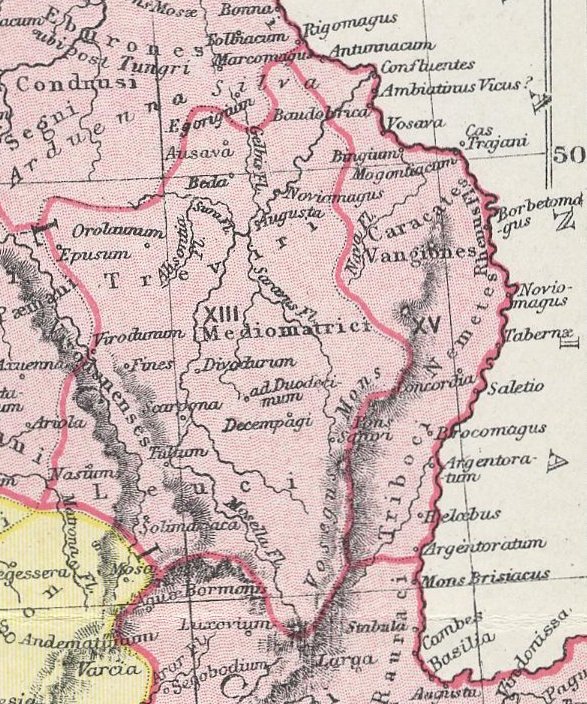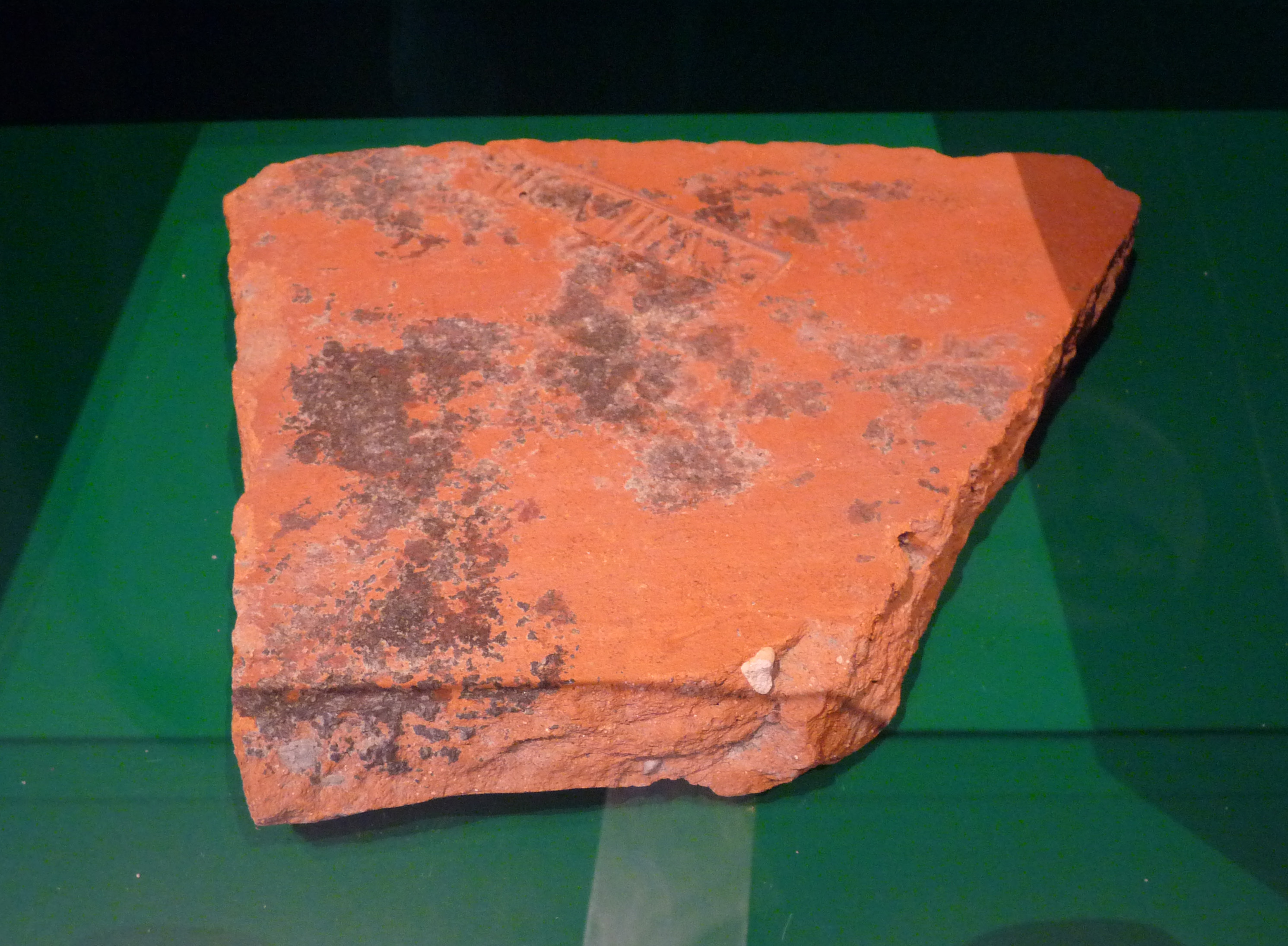|
Triboci
In classical antiquity, the Triboci or Tribocci were a Germanic people of eastern Gaul, inhabiting much of what is now Alsace. Name Besides the forms Triboci and Tribocci, Schneider has the form “Triboces” in the accusative plural. Pliny has Tribochi, and Strabo . In the passage of Caesar, it is said that all manuscripts have “Tribucorum”. "Three beeches" (Celtic ''tri'', Germanic ''boc'') has been suggested as an etymology, as has Germanic ''dribòn'' ("drivers f cattle, livestock). Geography Ptolemy places the Tribocci in Germania Superior, but he incorrectly places the Vangiones between the Nemetes and the Tribocci, for the Nemetes bordered on the Tribocci. However he places the Tribocci next to the Rauraci, and he names Breucomagus (Brocomagus, today's Brumath) and Elcebus (Helcebus) as the two towns of the Tribocci, making Argentoratum (Strasbourg) a city of the Vangiones. D'Anville supposes that the territory of the Tribocci corresponded to the mediaeval diocese o ... [...More Info...] [...Related Items...] OR: [Wikipedia] [Google] [Baidu] |
Treveri
The Trēverī (Gaulish: *''Trēueroi'') were a Celtic tribe of the Belgae group who inhabited the lower valley of the Moselle from around 150 BCE, if not earlier, until their displacement by the Franks. Their domain lay within the southern fringes of the ''Silva Arduenna'' ( Ardennes Forest), a part of the vast Silva Carbonaria, in what are now Luxembourg, southeastern Belgium and western Germany; its centre was the city of Trier (''Augusta Treverorum''), to which the Treveri give their name. Celtic in language, according to Tacitus they claimed Germanic descent.Tacitus writes, "The Treveri and Nervii are even eager in their claims of a German origin, thinking that the glory of this descent distinguishes them from the uniform level of Gallic effeminacy." ''Germania'' XXVIII. They possibly contained both Gallic and Germanic influences. Although early adopters of Roman material culture, the Treveri had a chequered relationship with Roman power. Their leader Indutiomarus led them ... [...More Info...] [...Related Items...] OR: [Wikipedia] [Google] [Baidu] |
Vangiones
The Vangiones appear first in history as an ancient Germanic tribe of unknown provenance. They threw in their lot with Ariovistus in his bid of 58 BC to invade Gaul through the Doubs river valley and lost to Julius Caesar in a battle probably near Belfort. After some Celts evacuated the region in fear of the Suebi, the Vangiones, who had made a Roman peace, were allowed to settle among the Mediomatrici in northern Alsace. (Metz however is now in Lorraine). They gradually assumed control of the Celtic city of Burbetomagus, later Worms. The emperor Augustus cultivated them as allies, intending to invade Germany through the region between the Rhine and the Danube. He had Drusus place two forts among the Vangiones, '' castrum Moguntiacum'' (13 BC, later Mainz) and one of unknown name (14 BC) at Worms. From there troops of the Vangiones were inducted into the Roman army. When he changed his mind after the Battle of Teutoburg Forest, the Vangiones were used for garrison duty on the far-fl ... [...More Info...] [...Related Items...] OR: [Wikipedia] [Google] [Baidu] |
Nemetes
The Nemetes (occasionally ''Nemeti'') were a tribe settled along the Upper Rhine by Ariovistus in the 1st century BC. Their capital, ''Noviomagus Nemeton'' (or ''Civitas Nemetum''), was close to the site of medieval Speyer. Their area of settlement was the contact zone between Celtic (Gaulish) and Germanic peoples. According to Tacitus, the Nemetes were "unquestionably Germanic". The name of the tribe, however, is Celtic as the name of its main town ''Noviomagus'' meaning ''noviios'' 'new' and ''magos'' 'plain', 'market' (cf. Welsh ''maes'' 'field', Old Irish ''mag'' 'plain'), as are those of several gods worshipped in their territory, including Nemetona, who is thought to have been their eponymous deity.John T. Koch (2006). ''Celtic Culture: A Historical Encyclopedia.'' ABC-CLIO, p. 1351. Both of these names are taken to be derivations from the Celtic stem '' nemeto-'' "sacred grove".Xavier Delamarre (2003). ''Dictionnaire de la langue gauloise.'' Éditions Errance, p. 233. ... [...More Info...] [...Related Items...] OR: [Wikipedia] [Google] [Baidu] |
Ariovistus
Ariovistus was a leader of the Suebi and other allied Germanic peoples in the second quarter of the 1st century BC. He and his followers took part in a war in Gaul, assisting the Arverni and Sequani in defeating their rivals, the Aedui. They then settled in large numbers into conquered Gallic territory, in the Alsace region. They were defeated, however, in the Battle of Vosges and driven back over the Rhine in 58 BC by Julius Caesar. Primary sources Ariovistus and the events he was part of are known from Caesar's ''Commentarii de Bello Gallico''. Caesar, as a participant in the events, is a primary source, but as his ''Commentaries'' were partly political, they may be suspected of being self-serving. Later historians, notably Dio Cassius, are suspicious of his motives. Role and status Ariovistus was a native of the Suebi. He spoke Gaulish fluently. He had two wives, one of whom he had brought from home. The second, who was the sister of King Voccio of Noricum, he acquired i ... [...More Info...] [...Related Items...] OR: [Wikipedia] [Google] [Baidu] |
Brumath
Brumath (, gsw, Bröömt) is a Communes of France, commune in the Bas-Rhin Departments of France, department in Grand Est in north-eastern France. History Brumath occupies the site of the Roman ''Brocomagus''. Princess Maria Christina of Saxony (1735–1782), Maria Christina of Saxony, aunt of Louis XVI, died in the château in the city. The building was partly demolished in the Revolution. Geography Brumath is located on the Zorn (river), Zorn river, and is north of Strasbourg and south of Haguenau. Population Landmarks Brumath has a Roman Catholic and a Protestant church. The Protestant church is housed in the former castle of the Hanau-Lichtenberg family since 1804. The vaulted basement of the castle also houses the Musée archéologique (Brumath), ''Musée archéologique'', displaying findings made in and around the ancient Roman town of ''Brocomagus''. Transportation Brumath is served by the Route nationale 63, linking Strasbourg to Haguenau, and by the A4 autoroute ... [...More Info...] [...Related Items...] OR: [Wikipedia] [Google] [Baidu] |
Notitia Galliarum
The ''Notitia Galliarum'' (or ''Notitia provinciarum et civitatum Galliae'') is a Roman register of cities dating to the 4th–6th centuries AD., contains the text of the ''Notitia'' with a map. The Latin register is divided into two headings. Ten provinces are listed under the diocese of Gaul and seven under the diocese of the Seven Provinces. For each province the capital city is given and then its other cities (''civitates''). They are given their ethnic names, i.e., "city of eople. A total of 115 cities are listed along with six or seven ''castra'' (forts) and one ''portus'' (harbour). The original list was probably drawn up during the reign of Magnus Maximus (383–388). Its rubric states that it was made on the order of the bishops, but this was probably added later when the list was updated. The ''civitates'' of the ''Notitia'' parallel the dioceses of the Roman church, bur for the 6th rather than the 4th century. It was probably at that time that the ''castra'' and ''por ... [...More Info...] [...Related Items...] OR: [Wikipedia] [Google] [Baidu] |
Diocese Of Basel
The Diocese of Basel (german: Bistum Basel; la, Diœcesis Basileensis) is a Catholic diocese in Switzerland. Historically, the bishops of Basel were also secular rulers of the Prince-Bishopric of Basel (german: Fürstbistum Basel). The bishop of Basel has not resided in the city of Basel since 1528. Solothurn is the seat of the Bishop of Basel. Today the diocese of Basel includes the Swiss cantons of Aargau, Basel-Country, Basel-City, Berne, Jura, Lucerne, Schaffhausen, Solothurn, Thurgau, and Zug. Ordinaries *Jakob Christoph Blarer von Wartensee (1576–1608) *Wilhelm Rinck von Balderstein (1609–1628) *Johann Heinrich von Ostein (1629–1646) *Beat Albrecht von Ramstein (1646–1651) *Johann Franz Reichsritter von Schönau (1651–1656) *Johann Konrad von Roggenbach (1657–1693) *Wilhelm Jakob Rink von Baldenstein (1693–1705) * Johann Konrad Reichsfreiherr von Reinach-Hirzbach (1705–1737) *Jakob Sigismund von Reinach-Steinbrunn (1737–1743) *Josef Wilhelm Ri ... [...More Info...] [...Related Items...] OR: [Wikipedia] [Google] [Baidu] |
Vulgar Latin
Vulgar Latin, also known as Popular or Colloquial Latin, is the range of non-formal Register (sociolinguistics), registers of Latin spoken from the Crisis of the Roman Republic, Late Roman Republic onward. Through time, Vulgar Latin would evolve into numerous Romance languages. Its Literary Latin, literary counterpart was a form of either Classical Latin or Late Latin, depending on the time period. Origin of the term During the Classical antiquity, Classical period, Roman authors referred to the informal, everyday variety of their own language as ''sermo plebeius'' or ''sermo vulgaris'', meaning "common speech". The modern usage of the term Vulgar Latin dates to the Renaissance, when Italians, Italian thinkers began to theorize that Italian language, their own language originated in a sort of "corrupted" Latin that they assumed formed an entity distinct from the literary Classical Latin, Classical variety, though opinions differed greatly on the nature of this "vulgar" dialect ... [...More Info...] [...Related Items...] OR: [Wikipedia] [Google] [Baidu] |
Gaul
Gaul ( la, Gallia) was a region of Western Europe first described by the Romans. It was inhabited by Celtic and Aquitani tribes, encompassing present-day France, Belgium, Luxembourg, most of Switzerland, parts of Northern Italy (only during Republican era, Cisalpina was annexed in 42 BC to Roman Italy), and Germany west of the Rhine. It covered an area of . According to Julius Caesar, Gaul was divided into three parts: Gallia Celtica, Belgica, and Aquitania. Archaeologically, the Gauls were bearers of the La Tène culture, which extended across all of Gaul, as well as east to Raetia, Noricum, Pannonia, and southwestern Germania during the 5th to 1st centuries BC. During the 2nd and 1st centuries BC, Gaul fell under Roman rule: Gallia Cisalpina was conquered in 204 BC and Gallia Narbonensis in 123 BC. Gaul was invaded after 120 BC by the Cimbri and the Teutons, who were in turn defeated by the Romans by 103 BC. Julius Caesar finally subdued the remaining parts of ... [...More Info...] [...Related Items...] OR: [Wikipedia] [Google] [Baidu] |
Argentoratum
Argentoratum or Argentorate was the ancient name of the city of Strasbourg. The name was first mentioned in 12 BC, when it was a Roman military outpost established by Nero Claudius Drusus. From 90 AD the Legio VIII Augusta was permanently stationed there. History The Romans under Nero Claudius Drusus established a military outpost belonging to the Germania Superior Roman province close to a Gaulish village near the banks of the Rhine, at the current location of Strasbourg, and named it Argentoratum. Its name was first mentioned in 12 BC but "Argentorate" is the toponym of the Gaulish settlement that preceded it before being latinised, though it is not known by how long. From 90 AD the Legio VIII Augusta permanently stationed in Argentoratum. The Roman camp of Argentoratum then included a cavalry section and covered an area of approximately , from approximately in Tiberian times. Other Roman legions temporarily stationed in Argentoratum were the Legio XIV Gemina and the Le ... [...More Info...] [...Related Items...] OR: [Wikipedia] [Google] [Baidu] |
Diocese Of Speyer
The Diocese of Speyer (lat. Dioecesis Spirensis) is a diocese of the Catholic Church in Germany. The diocese is located in the South of the Rhineland-Palatinate and comprises also the Saarpfalz Districts of Germany, district in the east of the Saarland. The bishop's Episcopal See, see is in the Palatinate (region), Palatinate city of Speyer. The current bishop is Karl-Heinz Wiesemann. As of 31 December 2006, 44.5% of the population of the diocese was Catholic. History In a slightly different hierarchic structure it is one of the oldest Dioceses in Germany. A bishop of Speyer was first mentioned in a document in 346. Through grants by the Holy Roman Emperor, the bishopric of Speyer, prince-bishops of Speyer established themselves as worldly as well as spiritual rulers. The ''Diocese of Speyer'' in its current form was established within the borders of the former Palatinate (region), Rheinkreis, a district of the Kingdom of Bavaria in 1817 after the secularization and division ... [...More Info...] [...Related Items...] OR: [Wikipedia] [Google] [Baidu] |
Mediomatrici
The Mediomatrici (Gaulish: ''*Medio-māteres'') were according to Caesar a Gaulish tribe at the frontier to the Belgicae dwelling in the present-day regions Lorraine, Upper Moselle during the Iron Age and the Roman period. Name They are mentioned as ''Mediomatricorum'' and ''Mediomatricis'' (dat.) by Caesar (mid-1st c. BC), ''Mediomatrikoì'' (Μεδιοματρικοὶ ) by Strabo (early 1st c. AD), ''Mediomatrici'' by Pliny (1st c. AD), ''Mediomatricos'' (acc.) by Tacitus (early 2nd c. AD), and as ''Mediomátrikes'' (Μεδιομάτρικες) by Ptolemy (2nd c. AD). The ethnonym ''Mediomatrici'' is a latinized form of the Gaulish ''*Medio-māteres'', which literally means 'Middle-Mothers'. It is formed with the stem ''medio-'' ('in the middle, central') attached to a plural form of ''mātīr'' ('mother'). The name could be interpreted as meaning 'those who live between the Matrona (Marne) and the Matra rivers' (i.e. the mother-rivers), or possibly as the 'Mothers of the ... [...More Info...] [...Related Items...] OR: [Wikipedia] [Google] [Baidu] |



_by_Johann_Nepomuk_Geiger.jpg)





